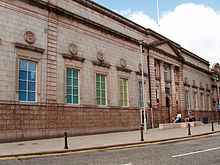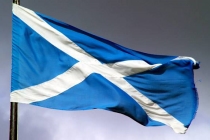Aberdeen Art Gallery Renovation Uncovers Medieval Skeletons
Nearly 100 medieval skeletons have been found by archaeologists during renovations to Aberdeen Art Gallery. Dating back to the 13th century archaeologists believe the discovery is evidence of the location of the Dominican Black Friars Abbey, founded between 1222 and 1249. The Art Gallery is built on the site of the old friary.
As pointed out in the Aberdeen (Scottish Gaelic: Obar Dheathain) Council website: "In medieval times the focus of Aberdeen was around its large natural harbour and the main streets of Broad Street, Gallowgate and Castle Street. The town was a centre for trade; pottery was imported by sea from England, Northern France, the Low Countries and Rhineland. Silk from Italy and even a piece of elephant ivory were excavated in Queen Street, showing how far Aberdeen's trade links spread. At first the civic life of Aberdeen was by the harbour but in the early 14th Century this moved to the area of Castlegate, due in part to flooding on the waterfront.
Religious life was important, fulfilling not only people's spiritual needs but also providing education and social services. Whilst the site of St Machar's Cathedral had been a focus for Christian activity since 6th Century, there were numerous churches and religious orders in the town. A Dominican Friary was established between 1222 and 1249 on what was the edge of Aberdeen and is now Schoolhill, where the Art Gallery stands within its grounds.
Most of the people would have lived in houses made of wattle-and-daub hatched with heather, rushes or straw. Some of the larger buildings would have been roofed with pottery tiles but only a few would have been built of stone. Everyday life would be similar today many people would have worked in the industries and shops in the town while the discovering of a bone skate in Queen Street shows even in medieval times people went ice-skating."
As well as the skeletal remains a number of artefacts including significant quantities of coins, coffin fixtures and fittings, organic finds including coffin wood and textiles, ceramics, stone artefacts, bricks, tiles and quantities of animal bone and shell have been found. The skeletons and other finds are being cleaned and sorted, then tests, including DNA, will be undertaken to determine the approximate date of the finds. It is then anticipated that appropriate arrangements will be made for reinternment with the involvement of the the Roman Catholic Bishop of Aberdeen.
Meanwhile Aberdeen Art Gallery will continue to undergo the £30 million transformation that is set to create a world class cultural centre celebrating art and music.


- Douglas MacQueen's blog
- Log in to post comments





